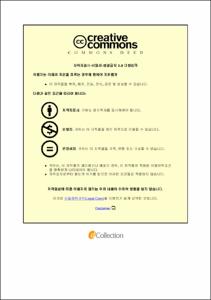강도다리 양식업의 생산 실태 및 경제적 효과 분석
- Abstract
- Abstract
The fish farming accomplished a rapid growth for the last several decades in Korea. The olive flounder (Paralichthys olivaceus) farming, in particular, achieved a spectacular growth, now accounting for 50% of the nation's total fish farming production. This quantitative achievement, however, was followed by various serious challenges like high mortalities in farms. To overcome those challenges, numerous efforts have been tried by olive flounder farmers.
As part of these efforts, the production of starry flounder (Platichthys stellatus) has recently increased. However, studies on this species were not much accumulated and in particular, there were few economic studies on the starry founder farming. In this regard, this study tried to make analysis of production status of the starry flounder aquaculture and analysed its economic effect based on data collected from the field survey on 5 fish farms.
The annual production of farmed starry flounder was only 550 tons in 2010, but it almost tripled to an annual average of 1,985 tons during the recent 3 years. The production value also increased 3 times during the same period from an annual average of about 7.7 billion won in 2010 to an annual average of 23.6 billion won during the recent 3 years. The number of farming households throughout the country also increased from 61 in 2010 to 94 in 2014, which slightly dropped recently. Starry founder farms are concentrated in Korea's south eastern part of Gyeongsangbuk-do province. The economic effect was analysed as follows. The gross profit rate among the 5 surveyed farms was quite high with the average of 26.32%. The economic efficiency was also shown to be stable with average NPV and IRR being about 916 million won and 33.6%, respectively.
The study also demonstrated significant environmental benefits generated from the starry flounder farming. As of 2016, fish farms depend on raw feed for 86% of their feed usage with the ratio being far higher with 92% among oliver flounder farms. By contrast, starry flounder farming depend on formula feed for 90% of their feed usage. This result indicates enormous environmental benefits of the starry flounder farming compared to the traditional fish farming as well as its economic potential like its competitiveness in overseas markets.
- Issued Date
- 2017
- Awarded Date
- 2017. 8
- Type
- Dissertation
- Publisher
- 부경대학교
- Affiliation
- 부경대학교 대학원
- Department
- 대학원 해양수산경영학과
- Advisor
- 김도훈
- Table Of Contents
- Ⅰ. 서론 1
1. 연구 배경 및 목적 1
2. 연구 방법 및 내용 3
Ⅱ. 선행연구 5
1. 강도다리 관련 선행연구 5
2. 양식업 경제성 분석 관련 선행연구 9
3. 배합사료 관련 선행연구 13
Ⅲ. 강도다리 양식업 생산 실태 17
1. 생산량 및 생산금액 실태 17
2. 어가수 실태 19
3. 사료 사용량 실태 21
Ⅳ. 강도다리 양식업의 경제적 효과 분석 27
1. 분석 자료 27
2. 분석 결과 38
Ⅴ. 요약 및 결론 49
1. 연구 요약 및 결론 49
2. 연구 한계점 및 시사점 51
참고문헌 54
- Degree
- Master
- Files in This Item:
-
-
Download
 강도다리 양식업의 생산 실태 및 경제적 효과 분석.pdf
기타 데이터 / 775.29 kB / Adobe PDF
강도다리 양식업의 생산 실태 및 경제적 효과 분석.pdf
기타 데이터 / 775.29 kB / Adobe PDF
-
Items in Repository are protected by copyright, with all rights reserved, unless otherwise indicated.